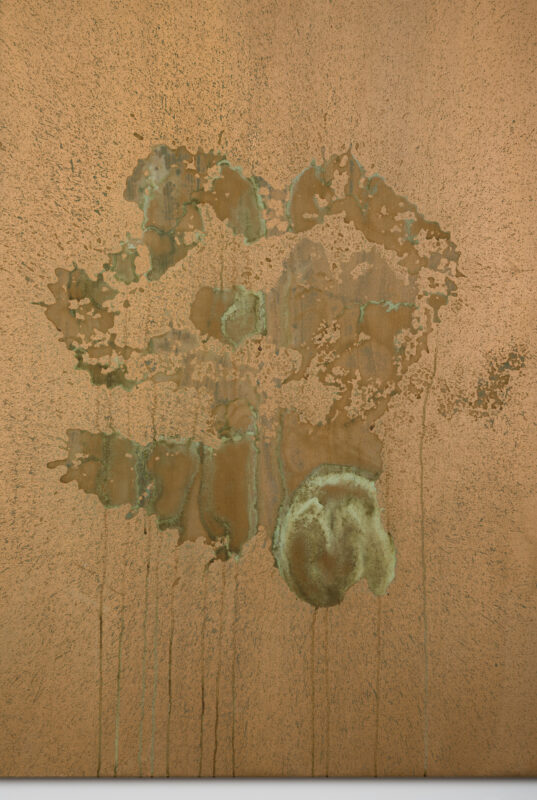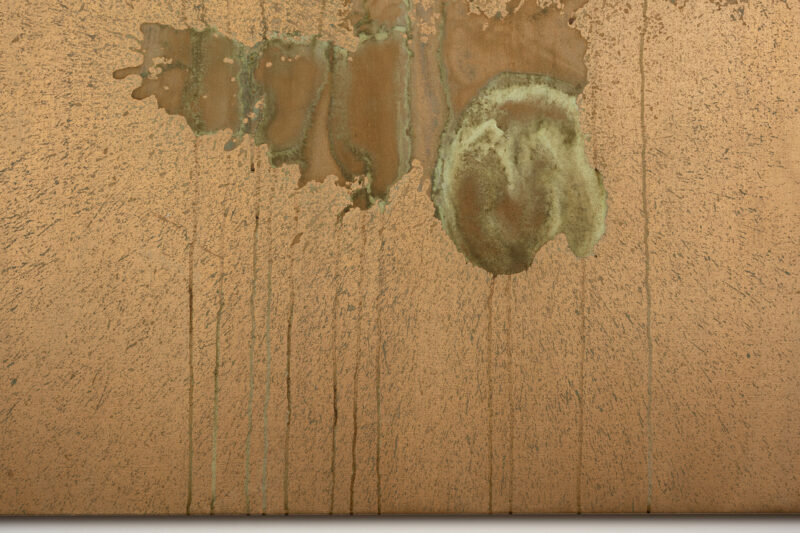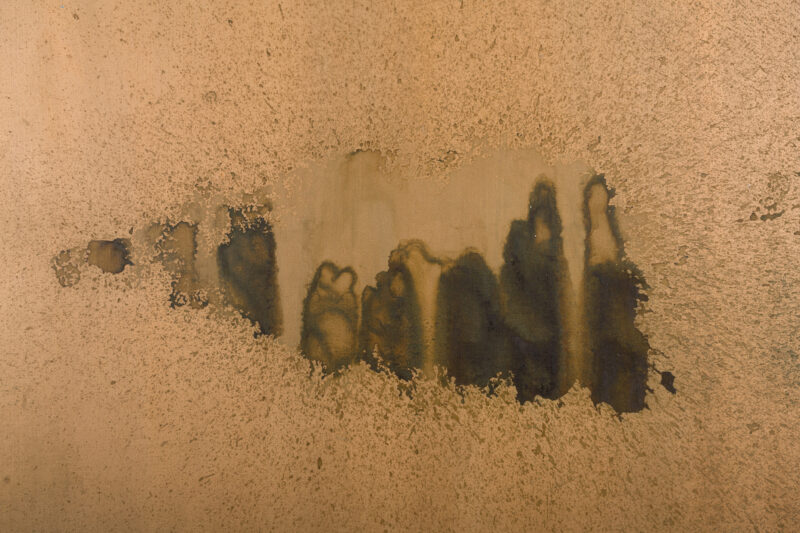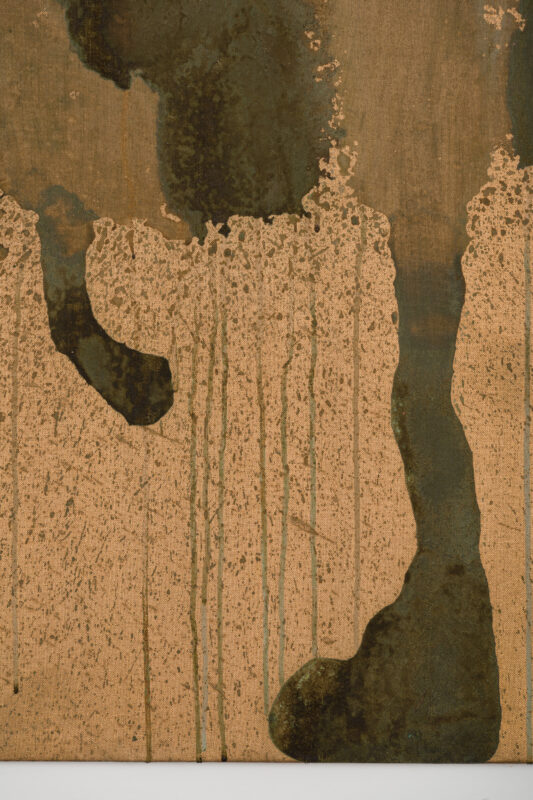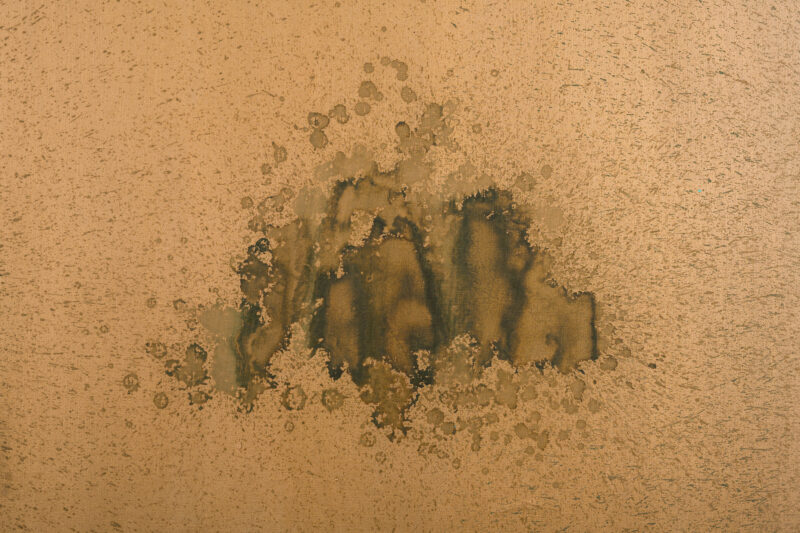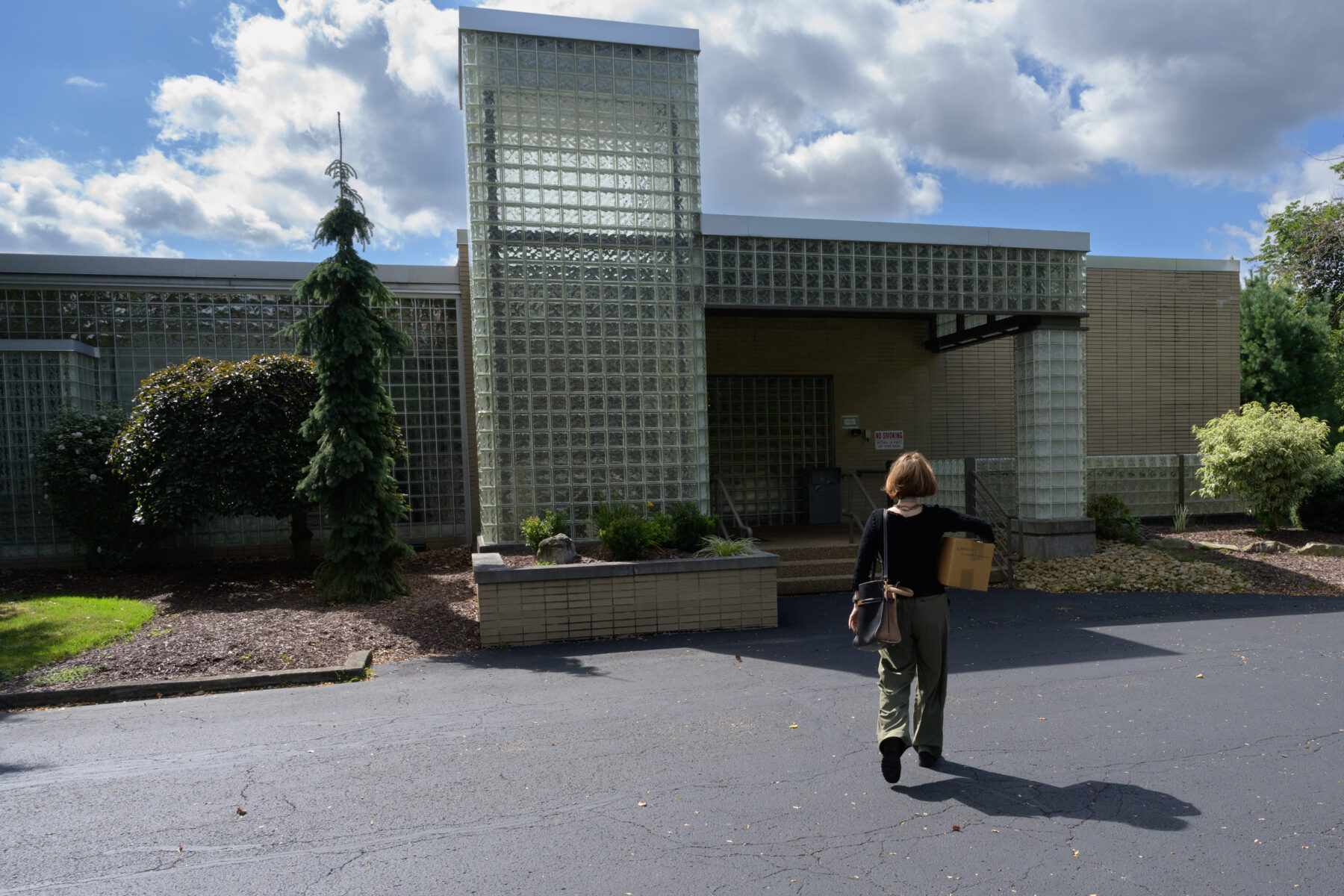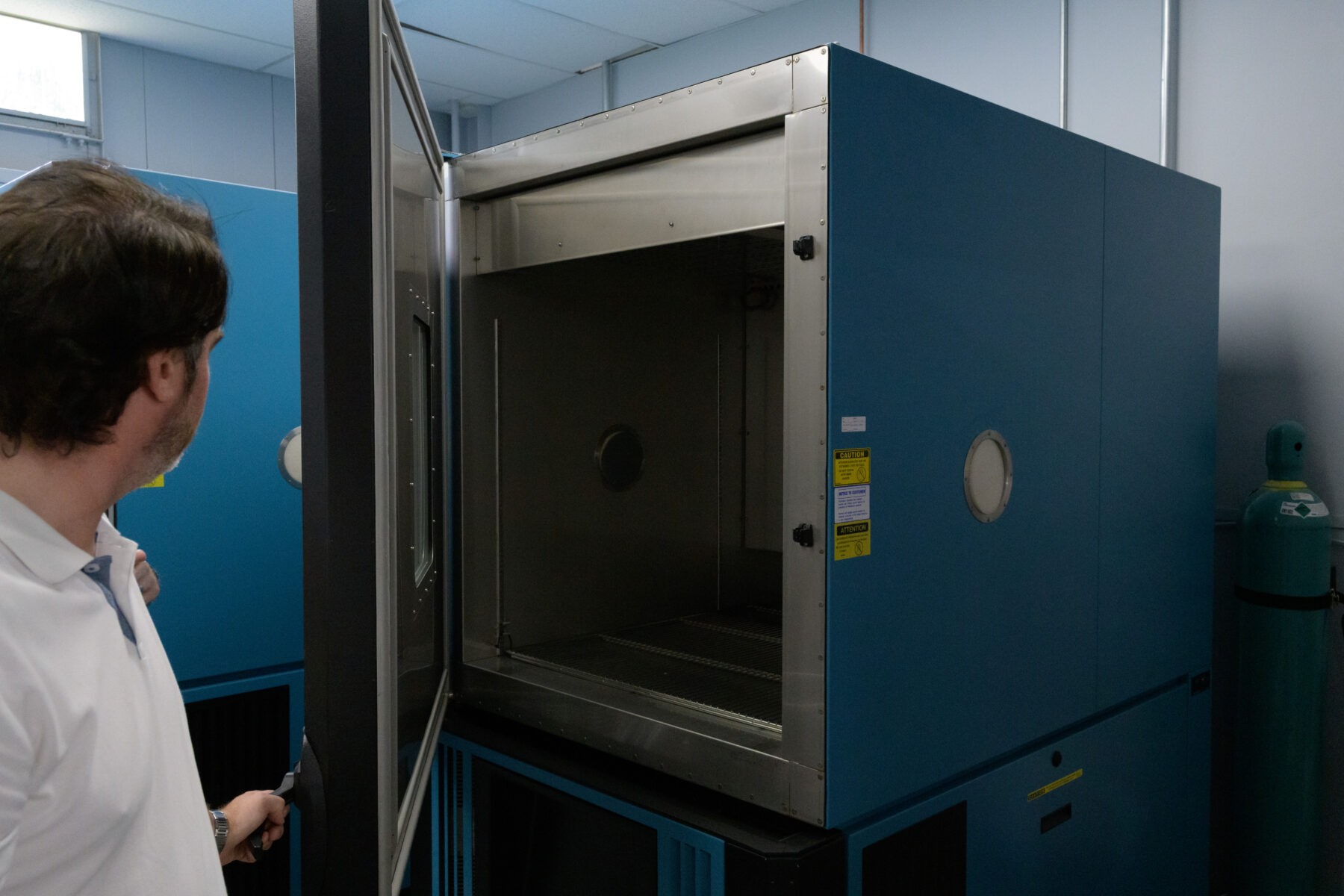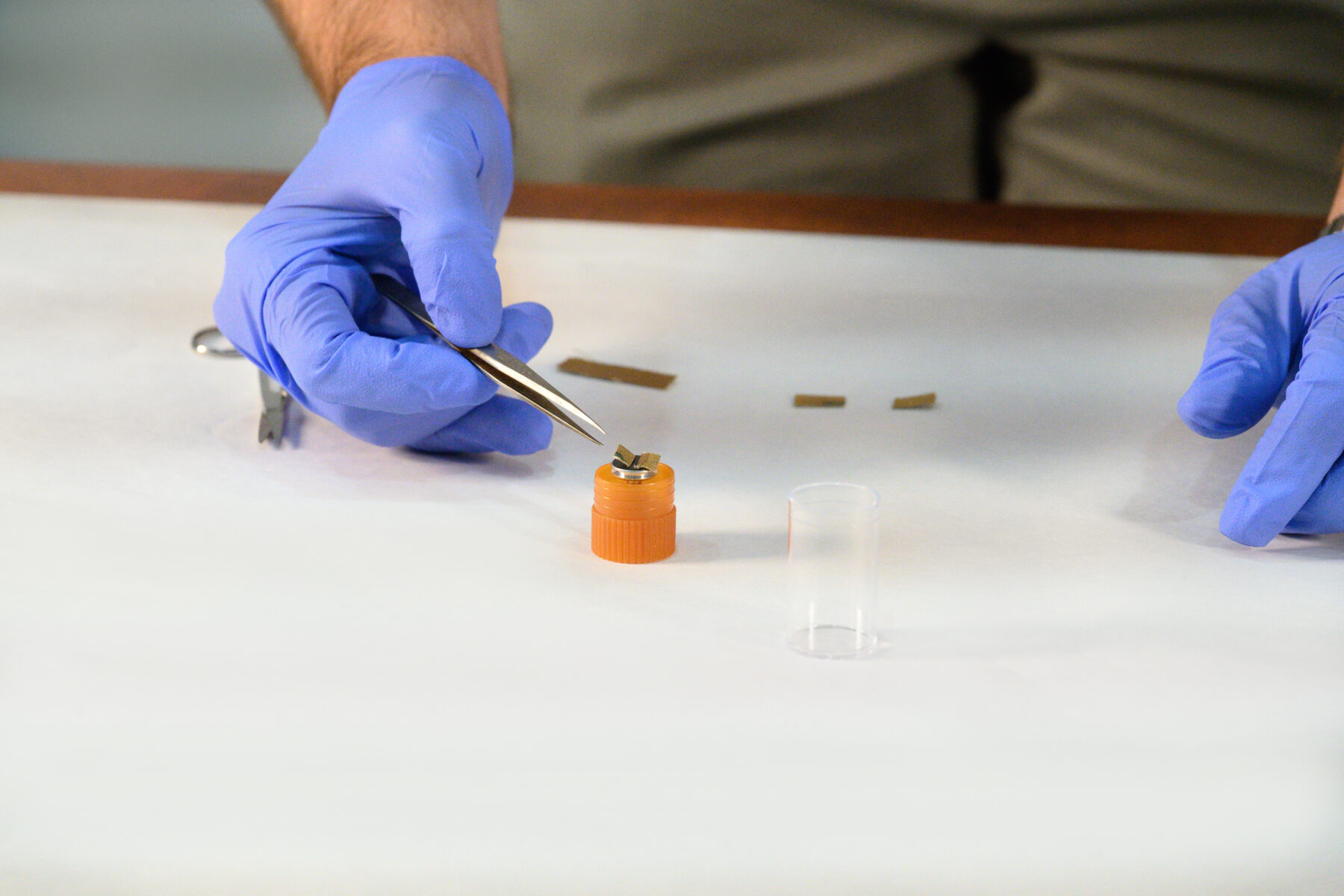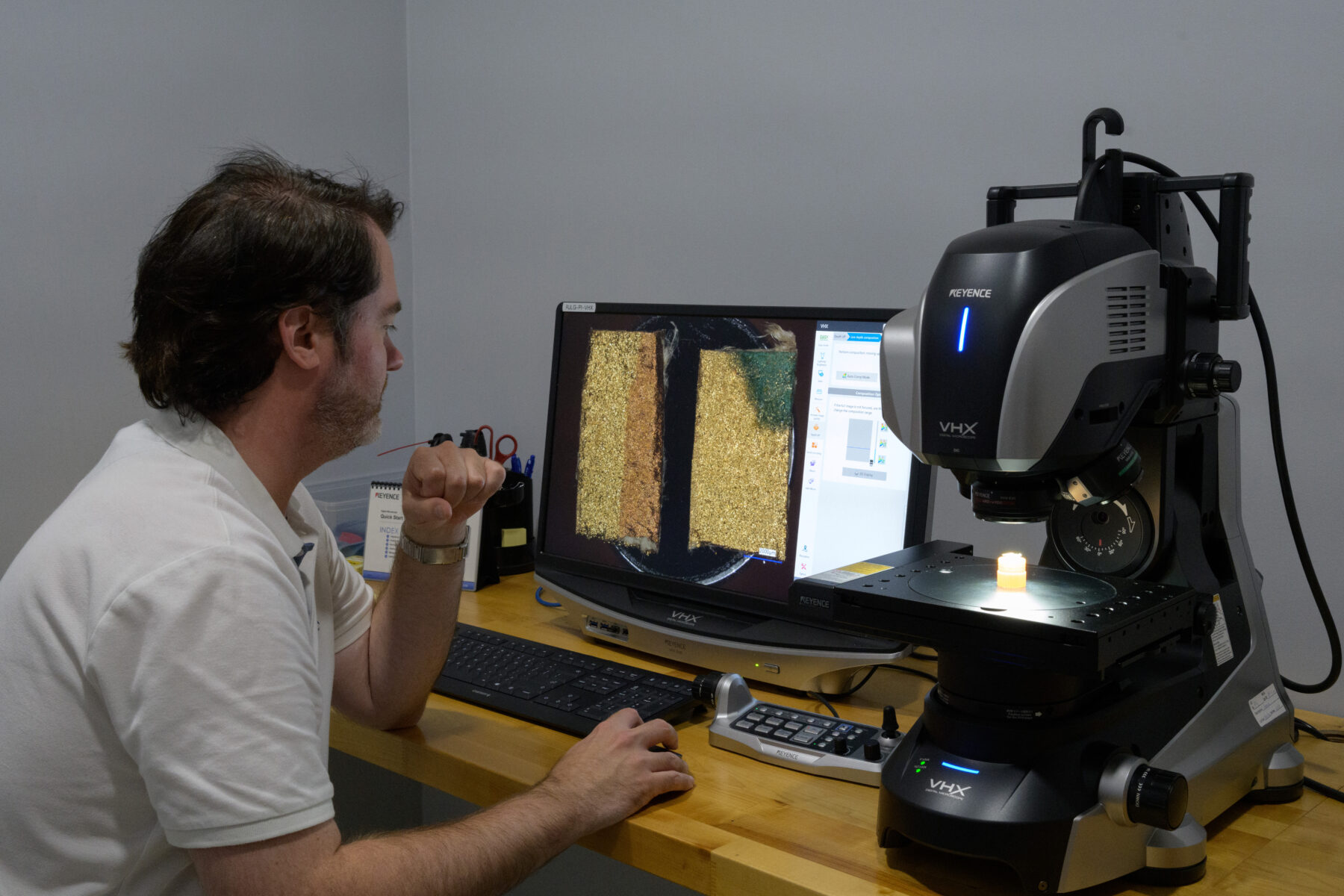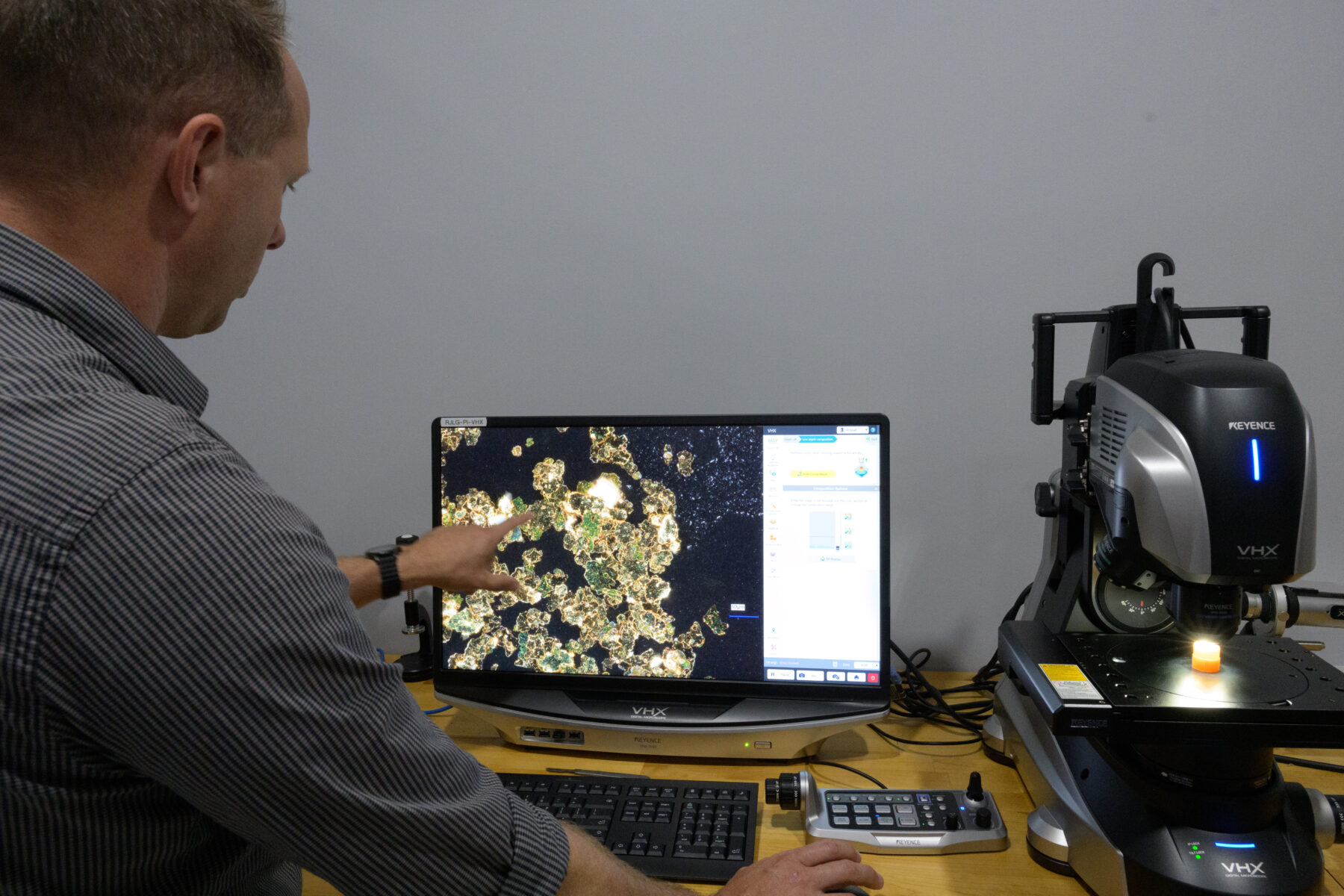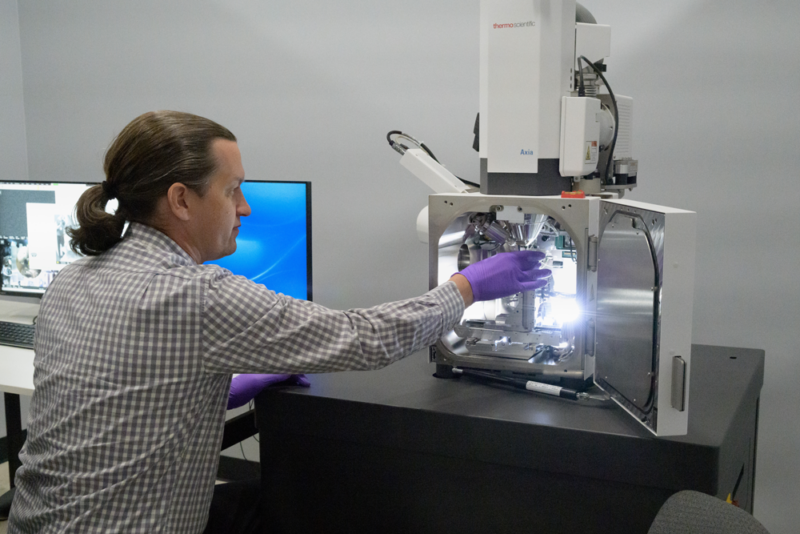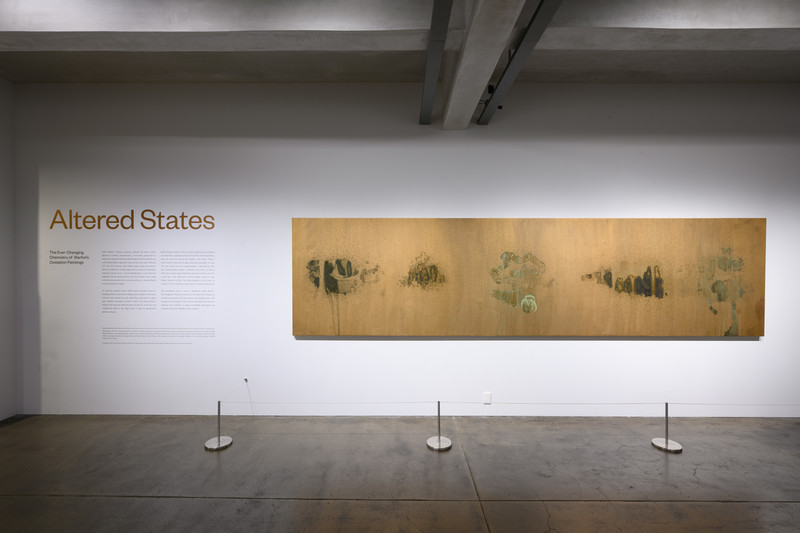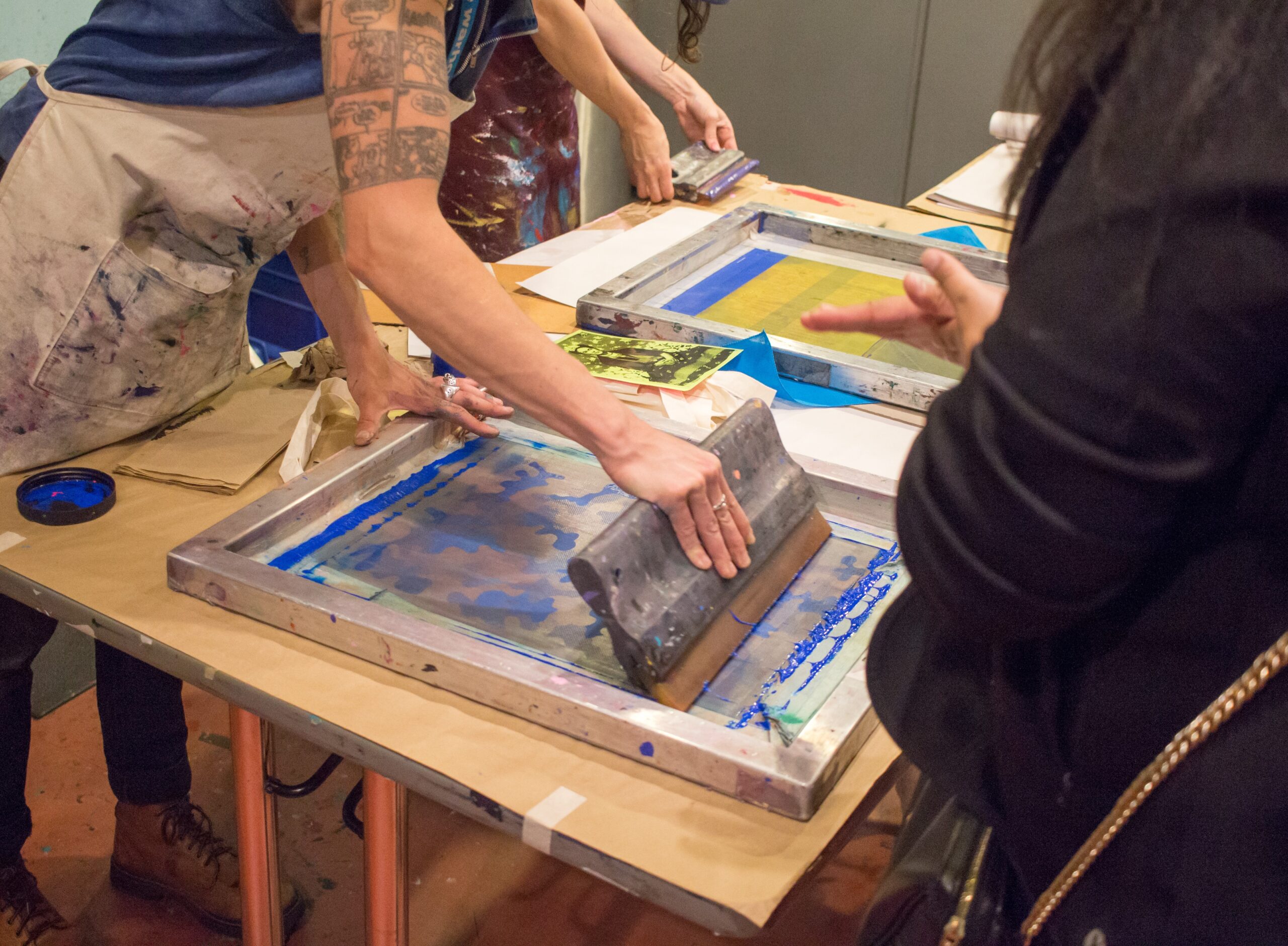Oxidation Paintings
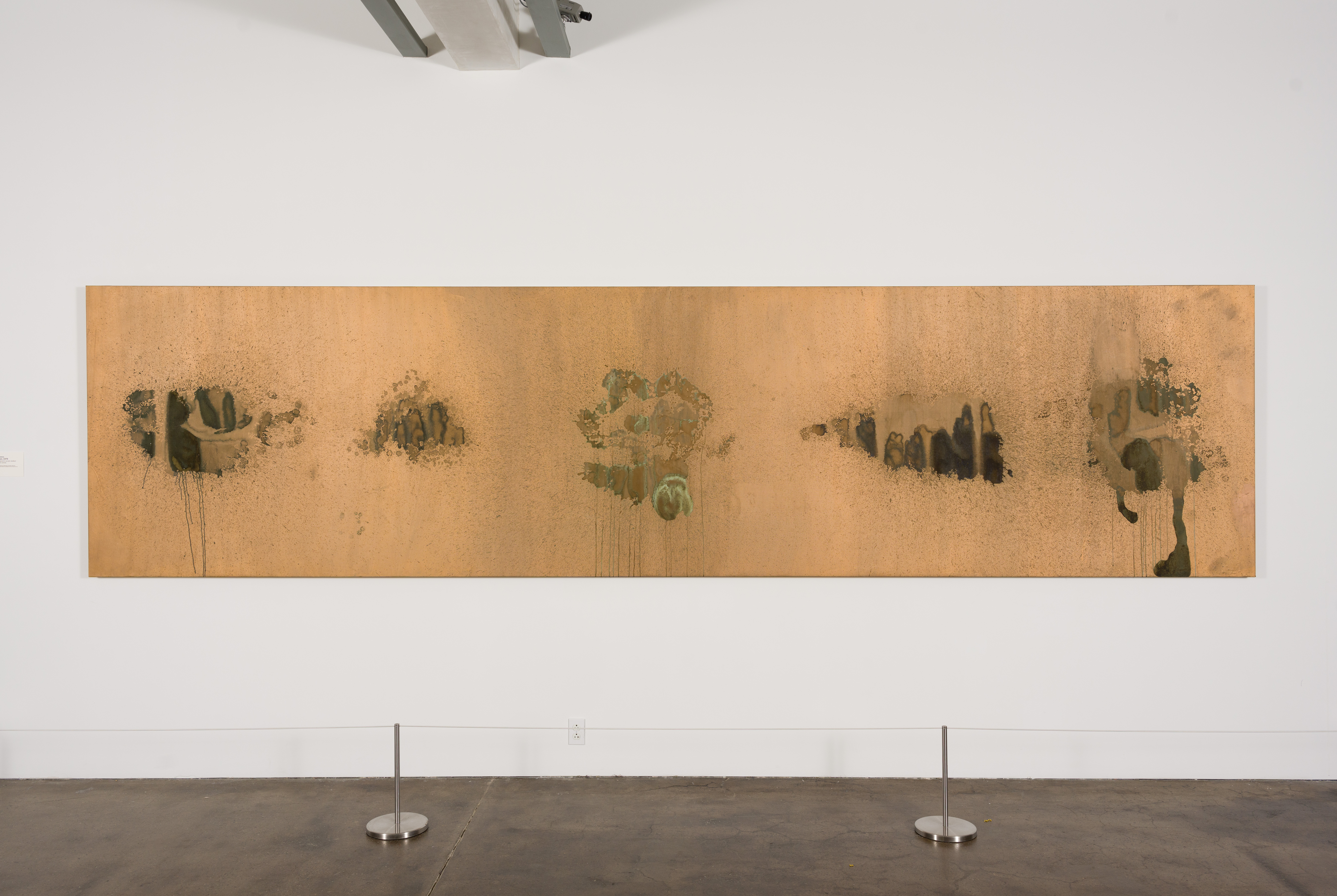
Andy Warhol's Oxidation (1978) hanging in the museum's 5th floor gallery.
Image Gallery
Watch: Origins of the Project
Museum staff including Amber Morgan, director of collections and exhibitions, and Rikke Foulke, conservator of paintings, discuss Andy Warhol’s Oxidation series and the origins of the Bank of America Art Conservation Project.
Image Gallery
Recreation
For three days in late December 2023, our staff used a camera to record an image every 30 seconds of the preparation and reaction of a mock-up “Oxidation” painting using a canvas prepared with metallic paint according to the protocol of Warhol’s Factory in the late 1970s. Factory assistants mixed metallic powder with water then added the mixture to acrylic medium. Application of two layers of this custom paint is seen in the first few moments of this video. Preparation of the urine also followed Factory protocol by consuming Vitamin B and it was applied to the mock-up canvas with a dropper. The footage captures the irregular and unpredictable reaction of the metallic paint to urine.
The standard pH of urine ranges from 6–7.5 and typical constituents of urine include water, urea, chloride, sodium, potassium, creatinine, and sulfur. Any of these materials may influence the outcome of oxidation.


